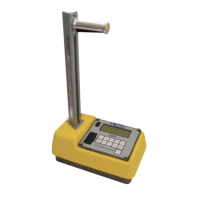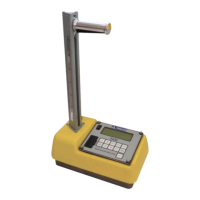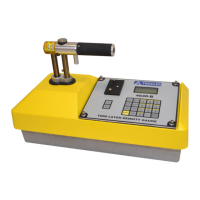Model 3440-L A–3
In backscatter mode (Figure A–2), the gamma photons entering the
material being measured must be scattered (or reflected) at least once to
reach the detectors in the gauge. This result is achieved by leaving the
source rod in a retracted position in the gauge. The rod is locked in the first
position below the SAFE position, placing the source and detectors in the
same horizontal plane. Under ideal conditions, no photons would reach the
detector in a direct path from the source. However, this is not practical and
the directly transmitted photons are generally held to 10% or less of the
backscattered photons. Since no hole is required for the source rod, the
backscatter mode is preferred for surfaces such as concrete and asphalt.
However, since the photons have been scattered at least once, the average
energy of the photons reaching the detectors is lower than the average
energy of the photons in direct transmission conditions. This increases the
possibility of error due to the effects of chemical composition.
While the direct transmission geometry measures the average density from
the source depth to the surface, the backscatter geometry yields an average
that is heavily weighted by the surface density. Since the photon path
length increases for photons passing through deeper material, this is a
normal phenomena as most of the photons reaching the detectors will have
passed through the surface material and have decreasing percentages
through deeper materials.
. THEORY OF OPERATION
Figure A–2. Backscatter Geometry
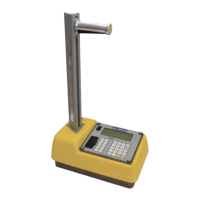
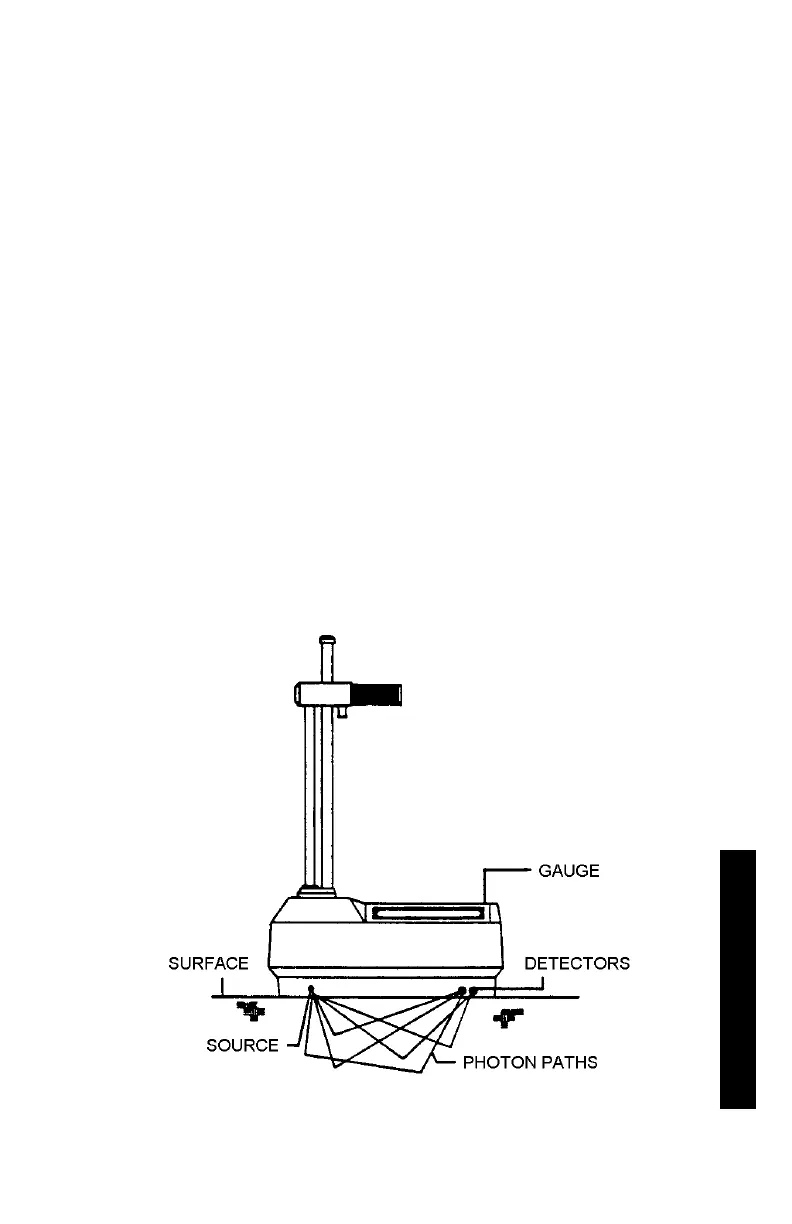